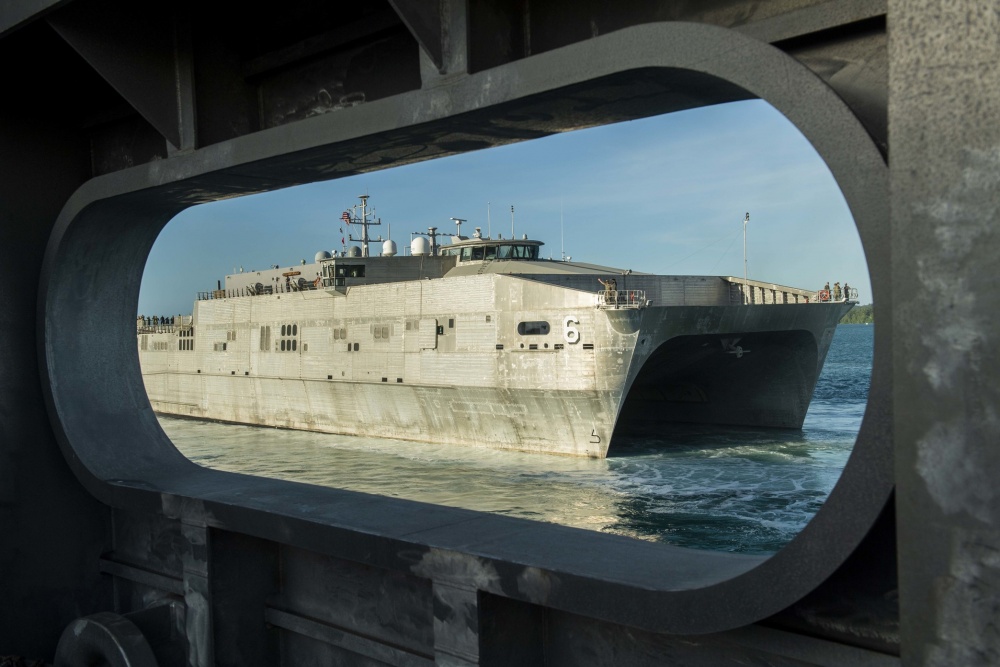
A military mobility study due out in June will place a greater emphasis on smaller, lower-draft vessels that will ferry supplies, troops and vehicles inside a theater, U.S. Transportation Command’s top general said on Tuesday.
The upcoming TRANSCOM Mobility Capability Study, the first since 2018, is set to map out an integrated approach to how the Defense Department will provide logistics for the next era of conflict that “assumes the United States is not a sanctuary,” Army Gen. Stephen Lyons said at the Hudson Institute on Tuesday.
There will be “elevated risk” at the same time, as there is increased demand for rapid mobility of forces and materiel, Lyons said.
The report will be delivered on time, by the end of June, and will consider the ongoing global posture reviews, new schemes for command and control for distributed forces and the need for resiliency. “How do we adjust rapidly” to a changing environment for the warfighter is the question to be answered, he said.
A future contested battlefield and the need for resilience could mean a change from “hub and spoke” delivery of supplies – in which logistics forces build a so-called iron mountain at a forward port and from there move troops and materiel into a theater. That would require a distributed command and control approach to theater logistics to increase survivability of forces, he said.
For the future, Lyons said he sees great promise in harnessing data, AI, machine learning and space assets to assist in the logistics missions of the future. He announced last year at a defense transportation conference that the command would study using private space companies like SpaceX and Exploration Architecture Corporation rockets to deliver cargo in the future.
“Think about moving the equivalent of a C-17 payload anywhere on the globe in less than an hour,” he said at the time.
He added with these advances, “you’re able to innovate faster” to meet crisis demands.
In the near term, Lyons highlighted the ongoing Defender Europe 21 and the upcoming Defender Pacific exercise to show how the command is working with other combatant commanders.
In Defender Europe, Lyons said it provides “an incredible opportunity” to demonstrate Joint Logistics Over the Shore (JLOTS), movement of heavy armor and forces, and the ability to sustain their operations. It also sends a signal to Russia that “we’re going to defend the alliance.”
Domestically, Lyons said the Colonial Pipeline ransomware attack was “a classic example [of] when commercial vulnerabilities” can affect national security interests. This pipeline shutdown did not reach that stage of being the “one point of failure” with those consequences.
“Our acquisition strategy is we have many providers,” he said.
One result of these attacks is increased willingness on the commercial side to work with government agencies like the NSA to beef up security and report intrusions.
“It’s a very cooperative atmosphere right now,” Lyons said.
He noted that it’s possible that some highway funds can be set aside in selected cities and states in a new infrastructure bill to improve access roads to seaports from power projection centers.





